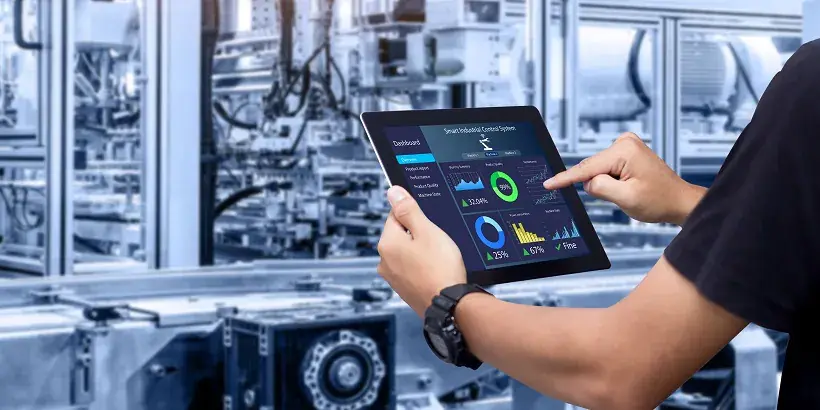
Understanding OPS Technology
Overview
Operational Technology (OT), commonly known as OPS technology, refers to the collection of hardware and software systems used to monitor and control physical processes, machinery, and infrastructure. Unlike Information Technology (IT), which deals with data processing and management, OPS technology is designed to interact directly with physical systems to enhance their operation and management. Examples include automated control systems in industrial settings and real-time patient monitoring systems in healthcare.
The Historical Development of OPS Technology
OPS technology has progressed significantly over the years. Initially, it involved basic mechanical systems and manual processes. With technological advancements, particularly in digital computing and automation, OPS technology has transformed into a sophisticated network of interconnected digital systems. Early systems used analog components, but today’s Operational Technology incorporates advanced digital sensors, complex data analytics, and artificial intelligence.
The Significance of OPS Technology in Today’s Industrial Landscape
In contemporary industries, OPS technology plays a pivotal role by improving efficiency, reducing costs, and ensuring operational safety. Key sectors such as manufacturing, healthcare, transportation, and energy heavily rely on Operational Technology to optimize operations and respond to dynamic market needs. The integration of OPS with IT systems further enhances data-driven decision-making and real-time operational control.
Core Components of OPS Technology
Hardware Elements
Sensors
In OPS technology, sensors are essential for gathering data from the physical environment. Examples such as temperature, pressure, and proximity sensors provide critical real-time information necessary for effective process monitoring and control.
Actuators
Actuators are mechanisms that convert signals into physical actions. In OPS systems, they might operate motors, valves, or other machinery based on input from sensors. This component is essential for automating processes and achieving precise control.
Control Systems
Control systems, which are integral to OPS technology, process data from sensors and issue commands to actuators. Modern control systems are sophisticated, incorporating programmable logic controllers (PLCs) and distributed control systems (DCS) to handle complex operations.
Software Elements
Data Analytics Platforms
Data analytics platforms are used to process and analyze data collected from various sensors and systems. These platforms leverage advanced algorithms and machine learning techniques to predict maintenance needs, optimize processes, and enhance system performance.
Automation Software
Automation software reduces the need for manual intervention by automating repetitive tasks. This includes software for managing manufacturing processes, logistics operations, and other automated systems.
User Interfaces
User interfaces enable operators to interact with OPS technology. They include dashboards, control panels, and monitoring screens that provide real-time data and system statuses.
Integration of Hardware and Software
Successful OPS technology relies on the seamless integration of hardware and software. Sensors and actuators gather and act on data, while software platforms analyze this data and facilitate automated control. Ensuring compatibility and reliable communication between different systems is also crucial for effective integration.
Applications Across Different Sectors
Manufacturing
Predictive Maintenance
OPS technology enables predictive maintenance by analyzing equipment data to anticipate potential failures before they occur. This proactive approach minimizes downtime and extends the equipment’s lifespan.
Process Optimization
In manufacturing, automation and control systems optimize processes by adjusting settings in real-time based on production data, leading to increased efficiency and higher product quality.
Click Here: Technology Solutions in Healthcare: Shaping Tomorrow’s Medicine
Healthcare
Patient Monitoring Systems
OPS technology enhances healthcare through patient monitoring systems that track vital signs and other health indicators. These systems can provide early warnings of potential issues, enabling timely medical intervention.
Automated Diagnostic
Automated diagnostic tools that utilize OPS technology analyze medical data to assist in diagnosing conditions more quickly and accurately, thereby improving patient outcomes.
Transportation
Fleet Management
OPS technology aids in fleet management by monitoring vehicle performance, tracking locations, and optimizing routes, leading to cost reductions and increased operational efficiency.
Traffic Control Systems
Traffic control systems powered by Operational Technology manage traffic lights, monitor traffic flow, and reduce congestion, thereby enhancing transportation efficiency and safety.
Energy

Smart Grids
Smart grids use OPS technology to oversee and manage electrical grids, allowing for real-time adjustments to balance supply and demand, integrate renewable energy sources, and improve grid reliability.
Renewable Energy Management
OPS technology helps in managing renewable energy sources such as wind and solar power by optimizing production and integrating these sources into existing energy networks.
Advantages of OPS Technology
Enhanced Efficiency
OPS technology boosts operational efficiency by automating processes and analyzing data in real time, leading to more streamlined operations and quicker decision-making.
Cost Savings
By optimizing operations and predicting maintenance needs, Operational Technology helps reduce costs, minimize downtime, and extend the lifespan of equipment.
Improved Decision-Making
Data analytics within OPS technology provides valuable insights that support informed decision-making, helping organizations improve performance and proactively address potential issues.
Real-Time Monitoring and Control
OPS technology enables real-time monitoring and control, allowing organizations to track system performance, address issues promptly, and maintain stability in operations.
Challenges and Considerations
Data Security and Privacy Issues
The integration of OPS technology with IT systems raises data security and privacy concerns. Safeguarding sensitive information from cyber threats and unauthorized access is a significant challenge.
High Initial Costs
The initial investment required for Operational Technology can be substantial, covering hardware, software, and integration expenses. Organizations must assess these costs against potential benefits and savings.
Integration Complexity
Integrating OPS technology with existing systems can be challenging, requiring meticulous planning and coordination to ensure compatibility and seamless functionality.
Need for Skilled Personnel
Effective implementation and maintenance of Operational Technology necessitate a skilled workforce. Organizations need to invest in training and development to ensure that staff can manage and utilize these systems effectively.
Case Studies and Examples
Success Stories
Manufacturing Sector
An automotive manufacturer implemented OPS technology to enhance its production processes. With predictive maintenance and process optimization tools, the company achieved a 30% reduction in downtime and a 20% increase in efficiency.
Healthcare Sector
A major hospital adopted Operational Technology for patient monitoring systems, resulting in a 25% decrease in response times to critical situations and improved patient care.
Lessons Learned
Challenges Encountered
One common challenge in Operational Technology implementation is integrating new systems with existing legacy equipment. Phased rollouts and thorough testing can help address these challenges.
Effective Solutions
Successful implementations often involve close collaboration between technology providers and end-users to customize solutions that address specific needs and overcome potential issues.
Emerging Trends in OPS Technology

AI and Machine Learning Innovations
AI and machine learning are becoming integral to Operational Technology, enabling more accurate predictions, enhanced automation, and improved data analysis.
Impact of IoT
The Internet of Things (IoT) is revolutionizing Operational Technology by connecting a wider array of devices and systems, leading to comprehensive data collection and enhanced control.
Significance of Big Data Analytics
Big data analytics plays a crucial role in Operational Technology, processing large volumes of data to uncover insights and trends that drive better decision-making and operational optimization.
Future Predictions
The next decade will likely see continued advancements in Operational Technology, including broader adoption of AI, IoT, and big data analytics, driving further innovation and efficiency across industries.
Statistics and Figures
Market Growth Projections
The OPS technology market is projected to reach $XX billion by 20XX, with a compound annual growth rate (CAGR) of XX%. This growth is fueled by increasing industry adoption and technological advancements.
Adoption Rates
Statistics indicate that XX% of manufacturing companies and XX% of healthcare facilities have adopted Operational Technology. Adoption rates are anticipated to rise as technology advances.
Technological Advancements
Recent advancements in Operational Technology have led to XX% improvements in efficiency and XX% reductions in operational costs, driven by innovations in sensors, control systems, and data analytics.
Conclusion
Recap of Key Insights
OPS technology is essential in modern industries for enhancing efficiency, reducing costs, and enabling real-time monitoring and control. Its applications span multiple sectors, including manufacturing, healthcare, transportation, and energy.
Future Outlook
The future of Operational Technology is promising, with ongoing advancements in AI, IoT, and big data analytics. These innovations will continue to drive industry transformation and operational excellence.
Final Reflections
Operational Technology is reshaping industries by facilitating smarter and more efficient operations. As technology evolves, its impact will expand, influencing how industries adapt and thrive in a rapidly changing world.







